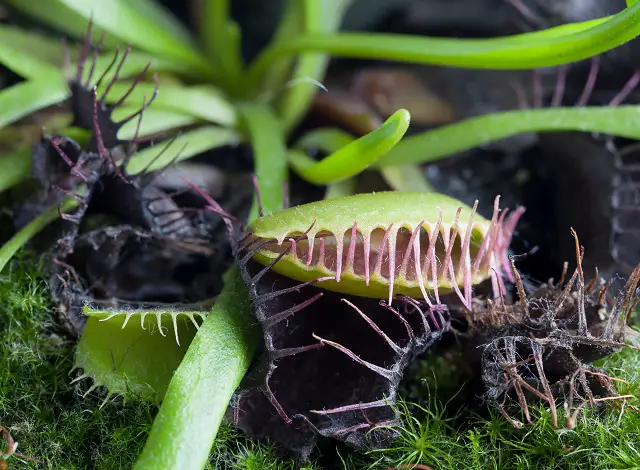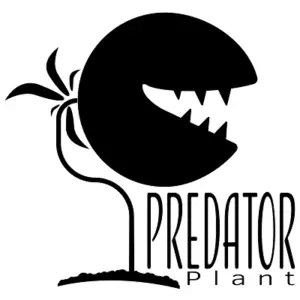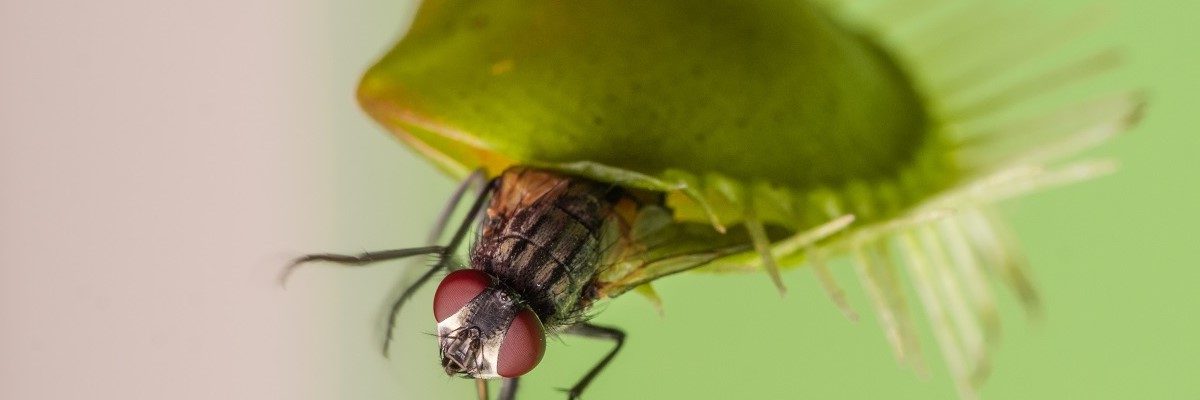The Venus flytrap needs a healthy environment in order to have the energy to snap closed and devour its food. By providing the essentials your plants need to thrive, they can spend their energy focusing on trapping and digesting food rather than trying to survive in unfavorable conditions.
As you can see from the list below, many insects are suitable as food for your Venus flytraps. There are also some less conventional options. Review the following for more information about the best and most practical alternatives based on your specific situation.
| Mosquitos | Bloodworms |
| Fruit flies | Ants |
| Flies | Beetles |
| Spiders | Ladybugs |
| Grasshoppers | Gnats |
| Mealworms | Cricket |
There is no comprehensive list above. A variety of food options are included, but practically any bug will do. Finding a small insect to fit completely inside the trap is important. Additionally, you should choose foods containing a lot of soft tissues and few or no hard shells.
Whether Venus flytraps should be fed live or dead prey is highly debated. There is no real agreement on this. As a general rule of thumb, plants that consume carnivorous insects outdoors should be able to supply their own nutrition. These tips will ensure your plant has a healthy diet if your climate doesn’t allow outdoor cultivation.
Feeding Venus flytraps live insects.
When it comes to feeding your plant, natural is best. Within the trap are tiny leaves that resemble hairs. The trap will close after it detects continuous movement. The continuous movement of the insects then triggers the release of digestive enzymes in the plant. Flytraps that are fed dead or freeze-dried food have to be “tricked” into closing. If the live insect does not trigger the trap, then touch the hairs several times using a toothpick.
Feeding Venus flytraps dead insects
Freshly dead insects work best. You will need to mimic what happens with live prey if you use this feeding method. Inserting the food using tweezers will trigger a partial closure by stimulating the trigger hairs. Using this method, it is possible to damage the seal created when the trap is fully closed or to puncture the leaf. Remember that closing the trap rapidly requires a lot of energy, so don’t trigger your plant if you aren’t feeding it.
Can you feed fruit to a Venus flytrap?
Flytraps have designed themselves to capture insects for the missing nitrogen they lack from the soil, which they then use to build new leaves. They are not designed to break down fruit, and the fruit likely doesn’t have enough nitrogen to do much. If you put fruit in a trap, it probably won’t do any favors for your flytrap and may even cause the trap to die as the fruit beings to rot inside of it. At best, no harm will come to the plant. In the worst-case scenario, the fruit will cause the trap to die.

Can you feed Venus fly traps vegetables?
Like fruit, vegetables will not feed your Venus flytrap at all. And will most likely cause damage to the trap as the vegetable will just rot. Try to stick to just insects.
Can you feed Venus fly traps fish food?
Despite the odd choice, betta fish food may be beneficial to nearly all carnivorous plants. There has been extensive discussion about this on various forums. It has been suggested that pellets be crushed to feed young seedlings. These pellets should be diluted with a bit of water before feeding to plants. Pellets are preferred over flakes because of their convenience. Getting a flake on a toothpick is difficult! Flake gets everywhere and is messy. A pellet is more convenient.
Can I feed my Venus flytrap sugar?
Sugar and honey can both damage the plant and promote fungus, mold, and harmful bacteria growth.
Can you feed Venus flytraps meat?
Unlike most plants, Venus flytraps can eat insects as well as more complex animals such as small birds, frogs, and lizards. Although Venus flytraps are capable of eating meat from many sources, insects and spiders are the most suitable sources.
If you want to try feeding your plant meat, I suggest not to. Once the plant closes, it will begin digesting the meat. As it digests the meat, the Venus flytrap will extract nutrients. Its composition’s high-fat content and complexity will prevent it from being fully digested. Providing meat to Venus flytraps may cause them to lose some of their leaves and negatively affect their health.
Venus flytraps usually capture their prey and start digesting it immediately after catching it. It takes a long time for the digestion to complete. It takes a few weeks for the victim to be broken up. It can sometimes take too long for the plant to digest its prey. If the food is not eaten, the trap will wither and die.
The Venus flytrap loses its leaves when it consumes a bug too large for it. Also, when they cannot process the food due to its composition. One of your plants’ leaves will die if you feed it raw meat or hamburger.
Conclusion
Venus flytraps are carnivorous plants that have an unusual appearance and reputation but are fun to grow and easy to care for. The Venus flytrap is attractive to your plant family if it receives consistent moisture and nutrient-poor soil. It also benefits from full sun, insects, and arachnids.


